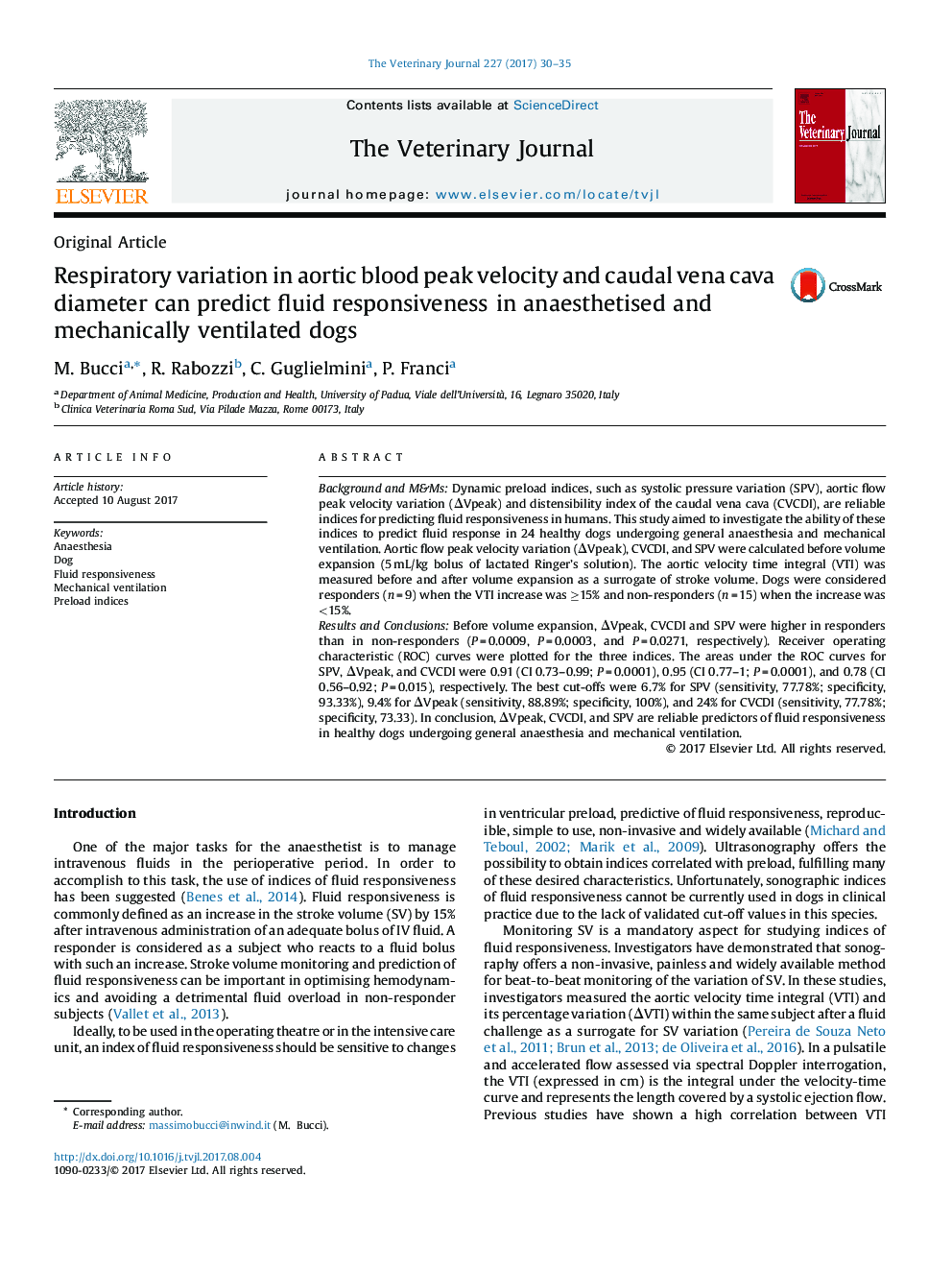| کد مقاله | کد نشریه | سال انتشار | مقاله انگلیسی | نسخه تمام متن |
|---|---|---|---|---|
| 5545006 | 1555216 | 2017 | 6 صفحه PDF | دانلود رایگان |
- Overhydration as well as underhydration can be detrimental. Individualised fluid therapy has been recommended.
- Dynamic indices of fluid responsiveness could promote a more need-oriented fluid therapy management in dog.
- âVpeak, CVCDI, and SPV are reliable predictors of fluid responsiveness in anaesthetised adult dogs.
- âVpeak is a very reliable index of fluid responsiveness.
Background and M&MsDynamic preload indices, such as systolic pressure variation (SPV), aortic flow peak velocity variation (ÎVpeak) and distensibility index of the caudal vena cava (CVCDI), are reliable indices for predicting fluid responsiveness in humans. This study aimed to investigate the ability of these indices to predict fluid response in 24 healthy dogs undergoing general anaesthesia and mechanical ventilation. Aortic flow peak velocity variation (âVpeak), CVCDI, and SPV were calculated before volume expansion (5 mL/kg bolus of lactated Ringer's solution). The aortic velocity time integral (VTI) was measured before and after volume expansion as a surrogate of stroke volume. Dogs were considered responders (n = 9) when the VTI increase was â¥15% and non-responders (n = 15) when the increase was <15%.Results and ConclusionsBefore volume expansion, ÎVpeak, CVCDI and SPV were higher in responders than in non-responders (P = 0.0009, P = 0.0003, and P = 0.0271, respectively). Receiver operating characteristic (ROC) curves were plotted for the three indices. The areas under the ROC curves for SPV, ÎVpeak, and CVCDI were 0.91 (CI 0.73-0.99; P = 0.0001), 0.95 (CI 0.77-1; P = 0.0001), and 0.78 (CI 0.56-0.92; P = 0.015), respectively. The best cut-offs were 6.7% for SPV (sensitivity, 77.78%; specificity, 93.33%), 9.4% for ÎVpeak (sensitivity, 88.89%; specificity, 100%), and 24% for CVCDI (sensitivity, 77.78%; specificity, 73.33). In conclusion, ÎVpeak, CVCDI, and SPV are reliable predictors of fluid responsiveness in healthy dogs undergoing general anaesthesia and mechanical ventilation.
Journal: The Veterinary Journal - Volume 227, September 2017, Pages 30-35
